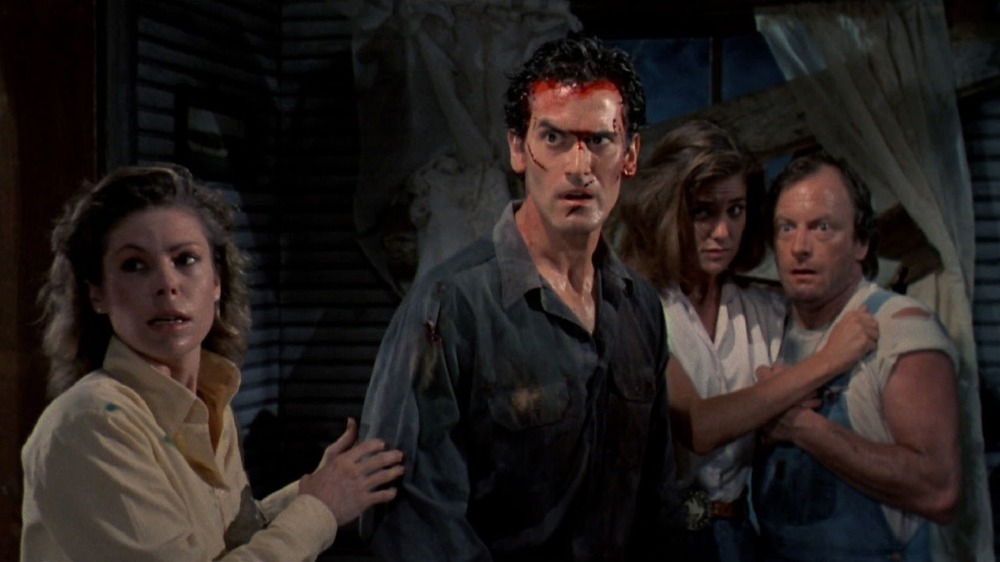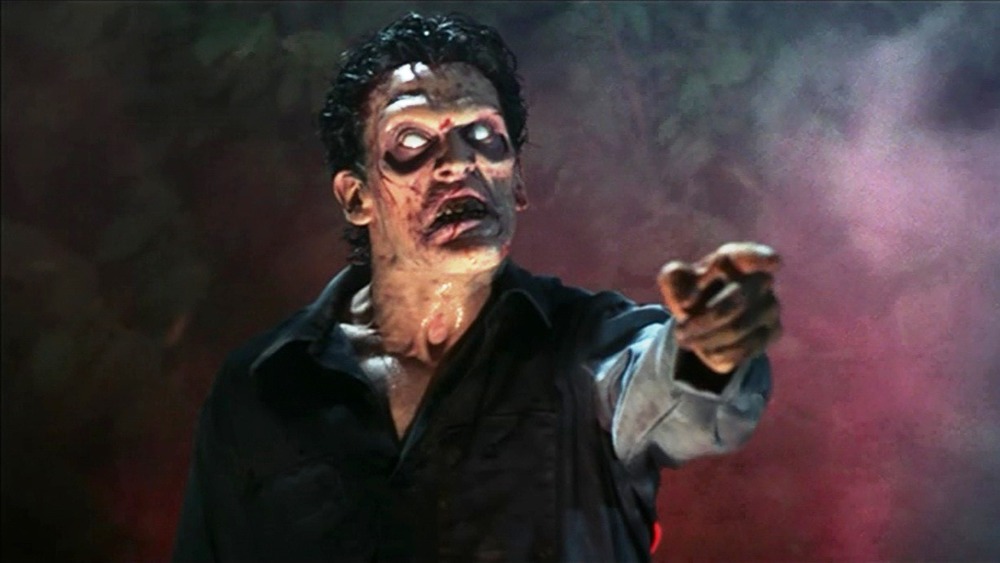Why Evil Dead 2 Is The Best Of The Evil Dead Trilogy
For fans of old-school horror flicks — and horror-comedies, a notoriously difficult mishmash to pull off — there may be no more viscerally entertaining trilogy than Sam Raimi's Evil Dead movies. Begun with 1981's The Evil Dead, continued with 1987's Evil Dead 2: Dead by Dawn, and concluded with 1992's Army of Darkness, the flicks follow the travails of the most put-upon retail store clerk in cinematic history: Ashley J. Williams (Bruce Campbell), a man whose ability to immediately assess any situation, no matter how bizarre, and deal with it accordingly is nothing short of unparalleled.
The Evil Dead was Raimi's sophomore picture (after 1977's little-seen It's Murder!), and it was famously shot on a shoestring budget in the middle of the Tennessee woods with a cast of unknowns over a grueling 12-week period. Championed by no less an authority than the great Stephen King, the movie was a surprise financial and critical success, immediately establishing Raimi as a young filmmaker (he was only 20 when the flick was shot) with an astonishing command of his craft.
Raimi would next helm the crime comedy Crimewave (written by Joel and Ethan Coen) in 1985 before returning to the bloody, bile-spewing well for Evil Dead 2, which was more of a loose remake than a proper sequel to the first film. The future director of the Spider-Man trilogy and the upcoming Doctor Strange in the Multiverse of Madness then dipped his toes in the superhero pool with 1990's Darkman (an original story which gave Liam Neeson his first lead role) before finishing off the trilogy with Army, in which a boomstick-wielding Ash faces off with Deadites in medieval times.
Each of these films certainly has its own distinct charms, and if you ask three different fans which are the best of them, you're likely to get three different answers. For our money, though, Evil Dead 2 takes that particular prize — mainly because not many movies have ever walked such a skinny tonal tightrope so effectively.
Evil Dead 2 improves on a low-budget masterpiece
First, let's get this out of the way: very few more effective films have been made on such a paltry budget (reportedly in the neighborhood of about $375,000) than The Evil Dead. The flick's game cast, creepy setting, and shocking violence (along with elements of black humor sprinkled throughout) would have made it stand out among the glut of slasher flicks of the era, even absent Raimi's insane photography, which made liberal use of Dutch angles, swooping dolly shots, and extreme closeups, among other unconventional techniques.
As previously mentioned, however, Evil Dead 2 essentially represented a chance for Raimi and crew to make the same film over again, with a far bigger budget of $3.5 million and a much more assured tone. While The Evil Dead flirted fairly heavily with dark humor, Evil Dead 2 leaned all the way into it, with even some of its more horrifyingly violent moments playing like nothing so much as slapstick. Campbell, giving Ash a much cockier, badass edge than in the first film, proved himself to be a gifted physical comedian (think of the scene in which his own possessed hand attacks him, forcing him to cut it off), and the script by Raimi and collaborator Scott Spiegel even indulges in a groan-inducing pun or two (like when Ash traps his severed hand under a bucket, weighted down with a copy of A Farewell to Arms).
Army of Darkness would lean even further into the comedy (and, unfortunately, away from the horror), and while it rightfully has its dedicated fans, Evil Dead 2 basically showed us all how horror-comedy should be done. Without it, we wouldn't have such hilarious, gory masterpieces as Tucker and Dale vs. Evil, Cabin in the Woods, The Babysitter, Raimi's own Drag Me to Hell, and so, so many others — plus, it's simply the single grooviest entry in Raimi's entire filmography, which is really saying something.

